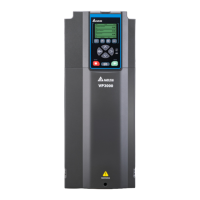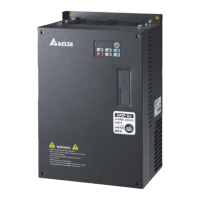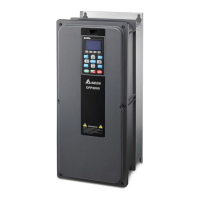Chapter 7 Second Development PlatformVP3000
271
Type Device Item Range of use Function
Serial port (for writing / reading programs) RS-485 / keypad port
Analog input / output Built-in three analog inputs and two analog outputs
Function expansion module
Optional
accessory
EMV-D42A; EMV-R6AA; EMV-A22A
7-1-1 Introduction to Device Functions
Input / output contacts
Function of input contact X: the input contact X connects with an input device, and reads input
signals entering the PLC. There is no limit to the number of times that contact A or B of each input
contact X can be used in the program. The ON / OFF of input contact X only can change with the ON /
OFF of input device; a peripheral device (WPLsoft) cannot be used to force input contact X to be ON /
OFF.
Output contact Y
The task of output contact Y is to send an ON / OFF signal to drive the load connected with output
contact Y. Output contacts are divided into two types: relay and transistor. There is no limit to the number
of times that contact A or B of each output contact Y. It is recommended that the number of output coil
Y is used only once in a program, otherwise the right to determine the output state when the PLC
performs program scanning will be assigned to the program's final output Y circuit.
Numerical value, constant [K] / [H]
Constant
Single-byte
K Decimal
K-32,768–K32,767
Double-byte K-2,147,483,648–K2,147,483,647
Single-byte
H Hexadecimal
H0000–HFFFF
Double-byte H00000000–HFFFFFFFF
PLC can use five types of numerical values to implement calculations based on its control tasks;
the following content is explanations of the tasks and functions of different numerical values.
Binary Number (BIN)
PLC's numerical operations and memory use binary numbers. Binary values and related terms
are as follows:
bit Bit is the fundamental unit of binary system, and its state is either 1 or 0
Nibble
Consist of four consecutive bits, e.g. b3–b0. To indicate a value which range
between 0–9 in decimal or a value which range between 0–F in
hexadecimal .

